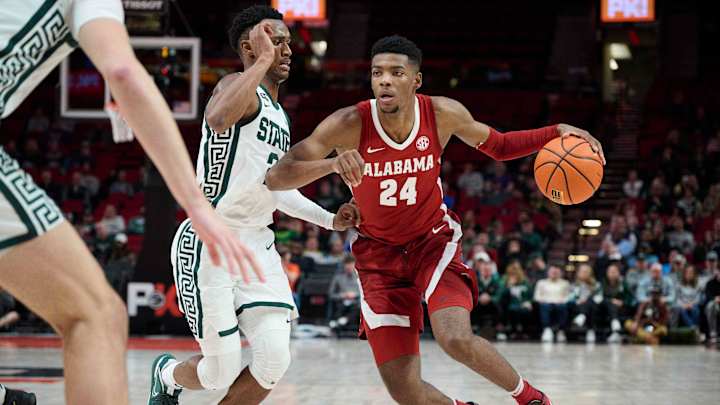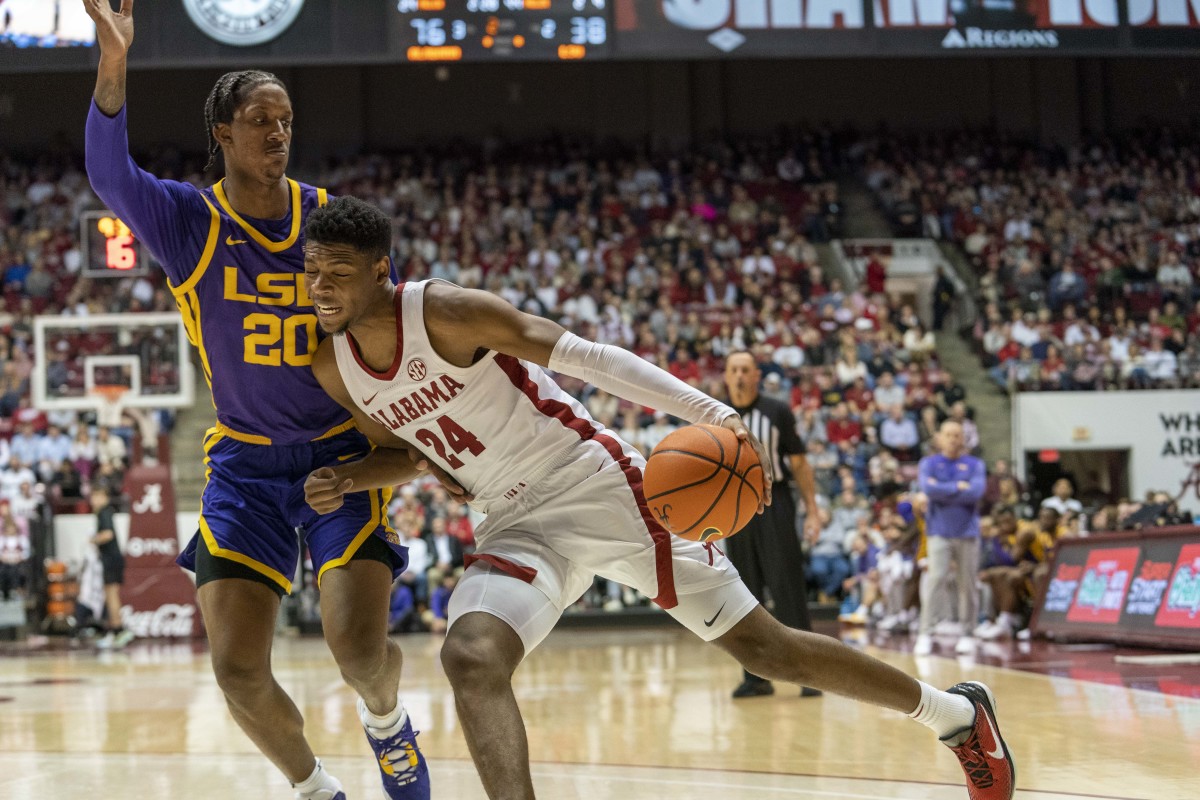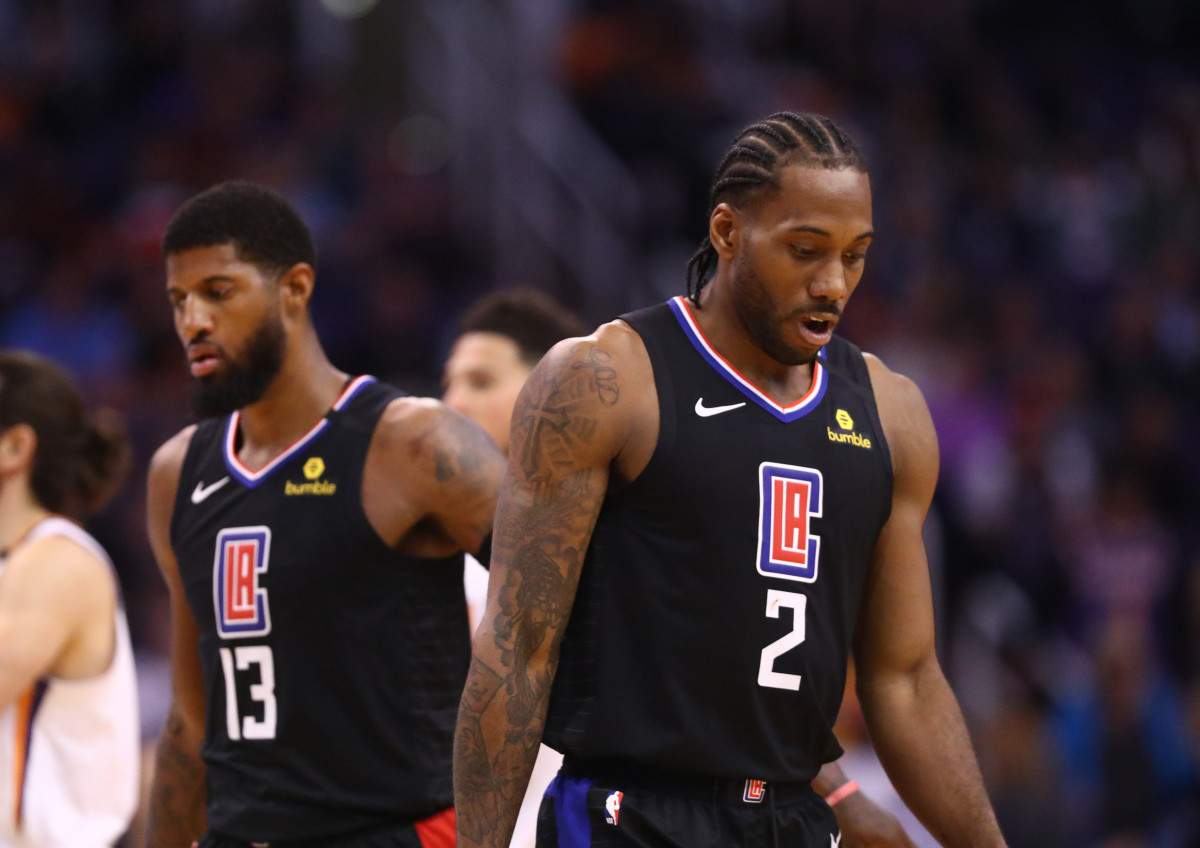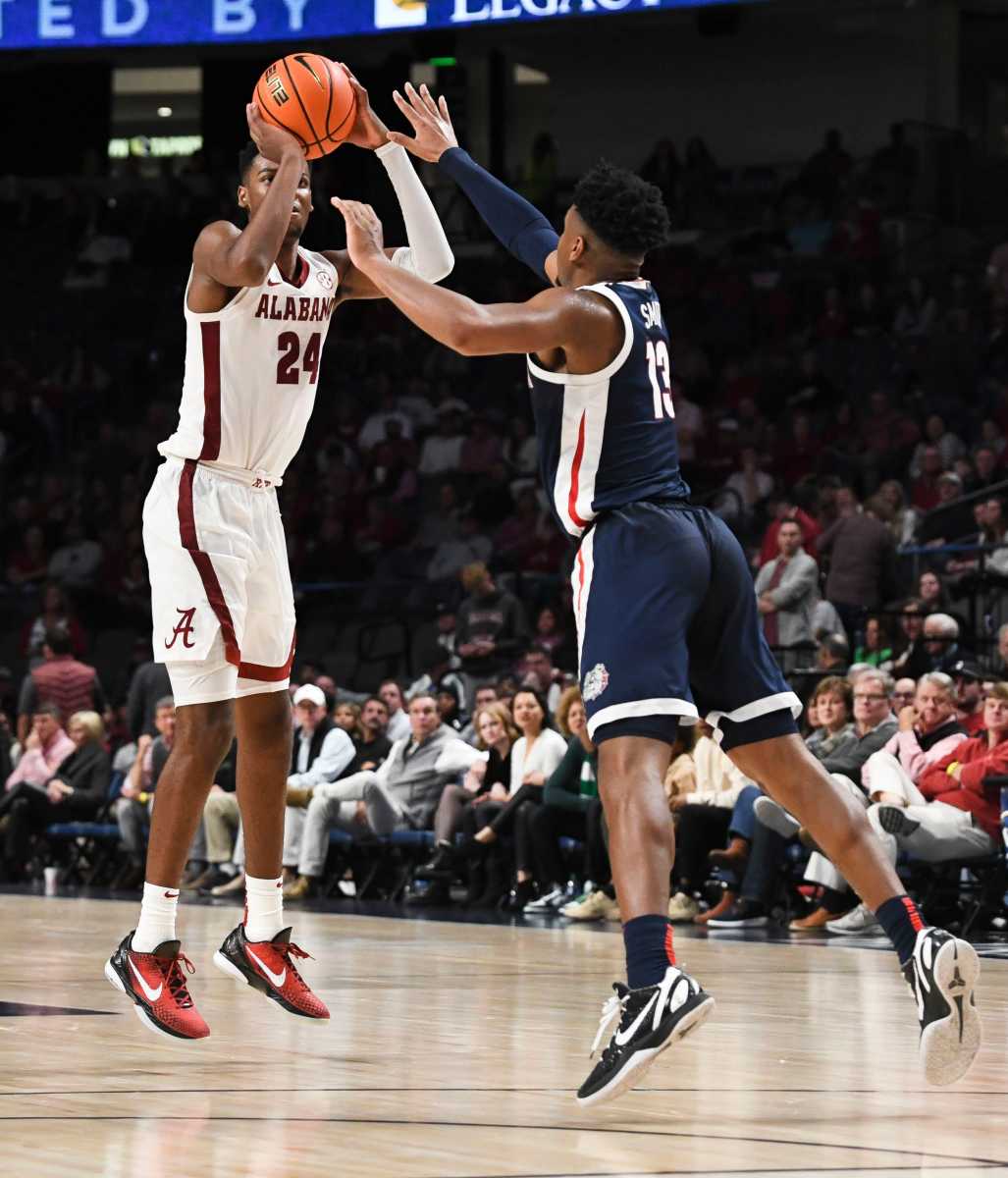A Deep Dive Into Brandon Miller's Game

In a draft headlined by two non-college prospects, Victor Wembenyama and Scoot Henderson, this year’s NCAA class has been a bit of a jumble. Unlike in recent seasons, there haven’t yet been any players able to separate themselves from the pack in the eyes of the consensus. Instead, to this point, there has been a group of nearly ten underclassmen vying for the title of best college prospect.
However, in the eyes of many, Alabama’s Brandon Miller has done the most to prove he is the ultimate prize in college hoops. He’s unquestionably been the best freshman at this level, averaging over 20 points and 8 rebounds through 18 games on an impressive 63.3 TS%. The 6-foot-9 forward has been leading arguably the best team in the country as well, with the Crimson Tide primed to nab at the number one ranking in the AP’s next poll.
But this praise hasn’t come without major pushback. Despite his NCAA dominance, many are still skeptical about Miller’s NBA translation, viewing him as barely a top ten prospect rather than the lead contender for the third pick. With such polarizing evaluations, it’s only right to question how good the 20-year-old really is, so let’s take a deep dive into his game:

For one, Miller is a preposterous shooter. The Nashville native, who leads all freshmen in Cerebro Sports’ 3PE metric, is currently shooting 46.2% from deep on 11.7 attempts per 100 possessions. This combination of efficiency and volume has only been replicated in eight other individual seasons from high major players in the last 15 years. Out of these eight snipers, only one completed this feat as a freshman, and none have stood at 6-foot-9.
There are some unorthodox characteristics of Miller’s jump-shot that make it so lethal. His set point is really low - just right of his head to be precise, which makes for a short and prompt initial gather into his shot. The low set point isn’t harmful given his stature. He also doesn’t really get much lift below him, alternatively releasing as he first leaves the ground. This all significantly reduces the time between the catch and release on his jumpers. It seems as if the ball flies out of his hands in a smooth, hasty, motion before he’s even controlled the catch.
Brandon Miller's release is so fast pic.twitter.com/x44ycr3QIN
— Arya Chawla (@achawlz) January 23, 2023
Miller’s shot diet consist of an impressive variety of makes. Per Synergy Sports, he ranks in the 92nd percentile in efficiency on catch and shoot attempts which includes 45% shooting on looks from behind the stripe. These conversions all fall under the same general classification, yet they can look so different.
Miller can fire treys after a wide assortment of prior movements and inconsistent bases. He’s regularly displayed the ability to zip into moving attempts off of harsh angles, resembling the sport’s top movement shooters. This excellence extends to instances in which he sprints forward into transition threes, or retreats backwards and shoots. He’s also a threat from well beyond the arc, with a fair share of hits from way deep, and can seamlessly shoot over contests due to his height.
Off-the-bounce, Miller has experienced similar success. Once again, he ranks in the 92nd percentile in dribble jumper efficiency according to Synergy Sports, and he shoots 47.2% on these tries from deep. He blends his dribbles into his shot with the ultimate fluidity and speed, allowing him to shoot over the top of anybody. He’s proficient shooting off-the-dribble from deep, after step-backs, and in the pick-and-roll.
Amongst 6-foot-9-and-taller NBA players, only Jayson Tatum, Paul George, and LeBron James shoot at least 2.7 pull-up threes per game as Miller currently does. The value of a forward who can create their own deep shot in volume is immense and almost always equates to stardom.
However, the bar for ball handling ability to provide this is significantly higher in the NBA than at the college level. Houston’s Jabari Smith Jr. is a prime example of this principle. Last year, at Auburn, he converted 41.5% of his 3.6 attempts per game. But in the league, he’s largely been unable to create any space off-the-dribble in the half-court to rise up due to a stiff and limited handle.
Despite drawing comparisons from many, Miller is eons ahead of Smith Jr. as a handler and mover. Sequences such as the ones below illustrate the clear disparities between the two, and how Miller exceeds the necessary threshold that Smith Jr. is yet to meet.
As a tall wing, Miller’s handle is naturally a bit high, but he uses that to his advantage by playing with the rock like a yo-yo. He keeps the ball on a string as he uses his long arms to launch the ball far outside of defenders’ bodies and back. His bag consists of astronomically wide crosses, hesi’s, changes in pace, and so much more. His flexible lower body cradles in unison with his dribbles and shrewd footwork, forcing defenders to lunge out of position. The result: an abundance of space to attack, whether it be by driving through gaping lanes or by pulling up.
Upon creating a driving lane, Miller is adept at exploding down it. He has the flexibility to get down and turn sharp corners with pace and his stride length and torque make it tough for defenders to cut him off.
The flexibility from Brandon Miller to turn this corner… pic.twitter.com/dNTNOSX1F7
— Arya Chawla (@achawlz) January 18, 2023
His ability to glide past the first level of defense to get a paint touch is a wildly underdiscussed strength. In general, Miller’s handle and speed are misrepresented by many. They are both weapons of his and tend to be victims of misdiagnosis of the actual limitations pertaining to his finishing ability, particularly his lack of vertical explosiveness in traffic and physical strength.
Aforementioned weaknesses are the primary reasons behind Miller’s ranking in the 44th percentile in terms of efficiency at the rim thus far. This fact, punctuated by his 32.8% shooting from inside the arc in his first nine games, has been the biggest catalyst for skepticism around him.
While he can effortlessly bypass the initial line of defense, the Cane Ridge alum struggles when met with contact, both from help defenders and from trailing defenders on his hip. His go-to in these scenarios has been to bump defenders in hopes of creating some separation to go up for a finish. Unfortunately, he doesn’t yet have the strength nor bounce to meaningfully move most defenders nor explode up towards the rim. He also tends to get too ambitious with these attempts in general. These deficiencies lead to some brutal lowlights.
However, Miller’s projection as an interior scorer isn’t all gloom. In his last nine contests, he’s shooting 64.2% from inside the arc. This near-double in efficiency is a product of a couple simple tweaks. For one, he’s doing a better job at using his frame and length to protect the ball from shot-blockers rather than attempting to finish through them. He’s also making use of his stellar touch more often by halting his drives short to opt for floaters and short mid-range shots.
Still, to be a star scorer in the league, barring he becomes a floater god or one of the best shot-makers ever, Miller will need to be able to create easier shots at the rim with higher frequency. To do this, he can look towards a modern legend to learn a thing or two.

At this stage in his career, Paul George has quite a few relevant similarities to Miller. The Clippers superstar not only paints an idealized portrait of what Miller’s shot-making ability could blossom into, but also sets an example for him as a driver. George too uses his slick handle and speed to beat defenders, yet can’t always explode upwards in traffic for finishes.
Nevertheless, George is an effective interior scorer, placing in the 76th percentile of all NBA players in efficiency at the rim. He’s strong enough to methodically utilize physicality to open up finishing angles and get to the line.
At just 20 years old, Miller has oodles of time to add to his frame, which is vital for him to reach his high-end outcomes. Added strength will make his drives so much more potent and could alleviate some of his leaping issues as well. He will surely add a good bit of muscle when he gets to the league; Miller can certainly get to near George’s level of strength in time. Along with this inevitable physical growth, his touch and understanding of how to use his frame around the rim make his finishing ability a favorable bet for substantial improvement.
On the playmaking front, Miller is already very advanced. His 1.7 assists per game do him no justice in regards to his passing ability. With his height, he can consistently see over the top of defenses and excels at finding the open man on the perimeter. He processes defensive rotations quickly and his ball handling ability allows him to craft some creative deliveries to promptly find open teammates via one-handed skip passes and whatnot.
This level of passing is a must for players like Miller to capitalize on their gravity. But he really takes his playmaking a step further through manipulation and tight-window dimes. He commonly uses his eyes, ball fakes, and deceptive movement patterns to move defenders and open up teammates whom he commonly feeds by threading needles with pristine accuracy.
The clips shown below are far from normal. He’s not quite a savant, but Miller needs to be discussed as a great playmaker more often.
Even then, he’s far from perfect, which is expected for someone his age. It would be beneficial if he shifted his process when driving to look for the pass a bit more. Too often he resorts to tough shots to finish drives while missing a man underneath the rim.
These looks aren’t simple, but Miller has clearly shown the ability to complete these passes, he just needs to alter his process a bit to make the most of his attacks.
Defensively, Miller is a mixed bag. Sometimes, he lacks effort. He fails to box out, he doesn’t slide as fast as he can, he settles for a foul etc. On the other hand, when locked in, he’s been a force in multiple different roles.
Miller’s combination of length and lateral quickness alone make him a vigorous on-ball defender. He can flip his hips and cut off most wings, then contest with his long wingspan and quick hands. This length also serves as a disruptive safety net should he get beat.
He’s not quite quick enough to stick with the shiftiest guards and really lacks the strength to stick with bigger guys - or anybody who gets into his body for that matter, whether it be a handler or a screener.
Regardless, with some physical development, there’s real on-ball stopper potential with Miller.
Off the ball, Miller also uses his length to be a big time disruptor. He’s been an effective weakside rim protector and has been a presence when helping in the gaps.
Once again, he’ll likely need some more bulk to really thrive in this role in the NBA, but Miller’s tools give him a legitimate pathway to defensive excellence at the next level.

For all the criticism he receives, Miller is still a 6-foot-9 dynamite shooter with a crafty handle, fluid movement skills, soft touch, advanced passing ability, and high-level defensive potential. He certainly needs to get stronger, and he’ll likely never sky up in crowds for poster dunks, but given what he does do, it’s difficult not to be optimistic about his future. Broadly speaking, it’s becoming increasingly clear by the day that Miller deserves to be the leading candidate for the third pick in the 2023 NBA Draft and certainly should not fall out of the first five.
Want to join the discussion? Like Draft Digest on Facebook and follow us on Twitter to stay up to date on all the latest NBA Draft news. You can also meet the team behind the coverage.
